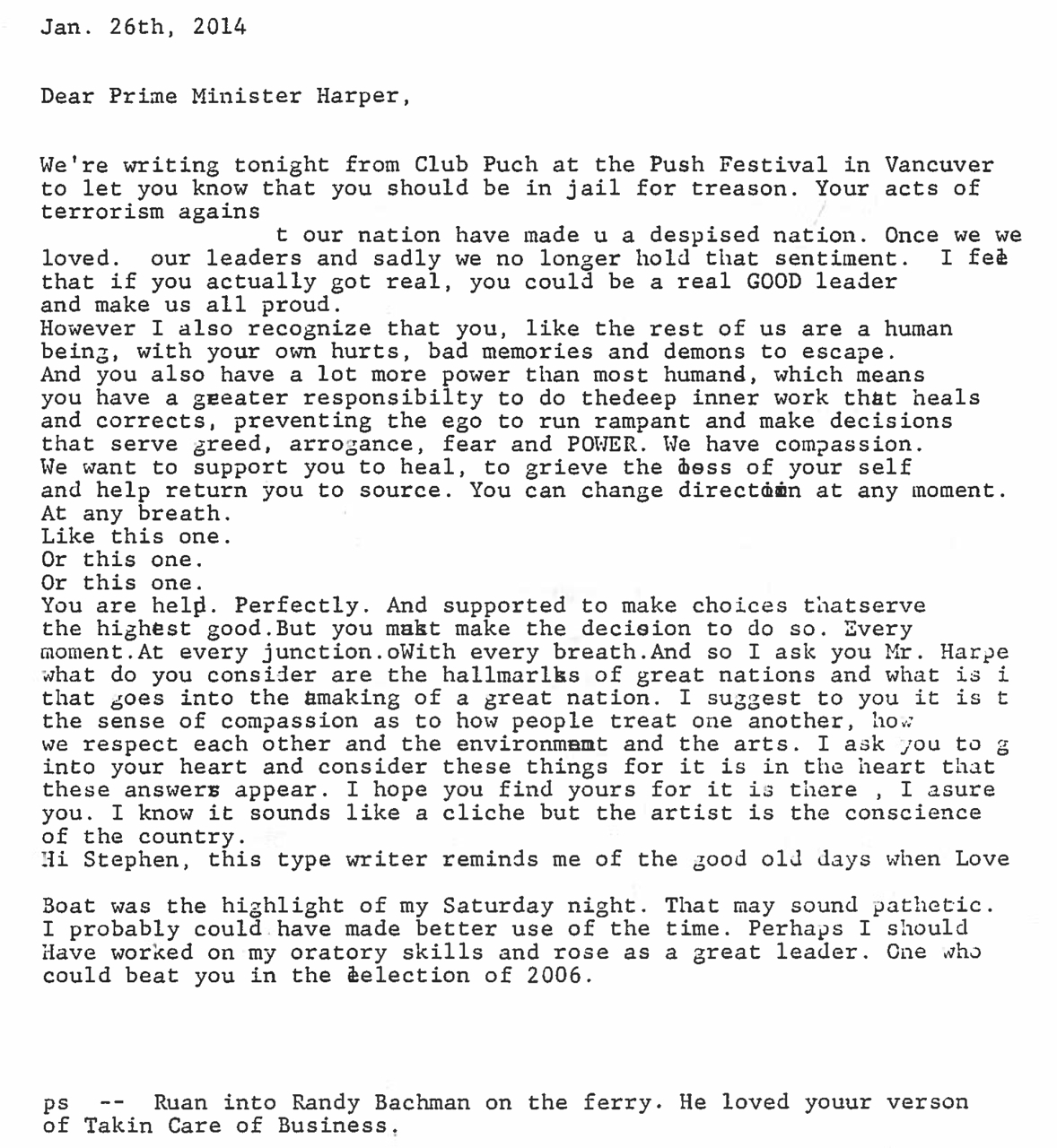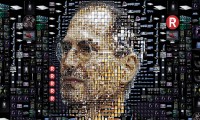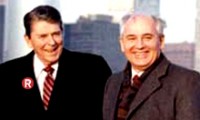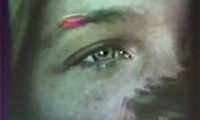Presented on stage by Zsuzsi Gartner at Ryeberg Live Vancouver 2014.
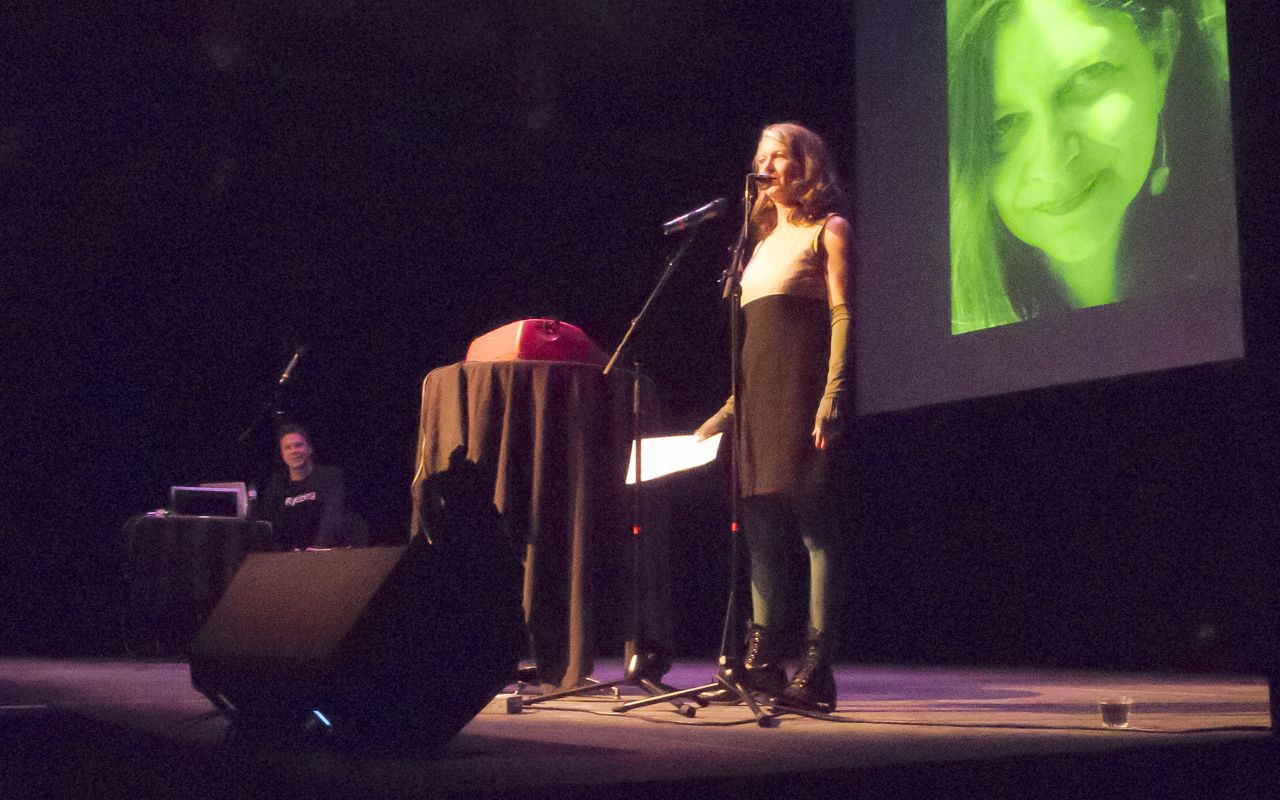
[Text in square brackets was spoken into a microphone with deep-voice distortion].
Between Canada Day 2012 and mid-July 2013 I did something most people I know found completely loco: I went analog. I’ve long felt like an “analog girl living in a digital world” to borrow from Neil Gaiman’s “American Gods.” I’ve used analog watches and film cameras forever, and rediscovered vinyl years back. I like rotary dial phones. There’s an unbeatable tangibility to the look and sound of these useful and beautiful objects and their mechanisms. Some people find circuit boards hot; for me it’s the steampunk aesthetic — gears, brass, copper, old leather. And I love that analog exists in time & space and not somewhere in a Cloud. Digital feeds on our addiction to instant gratification. Analog fosters patience. It’s the communications equivalent of the Slow Food movement.
So I went full-metal analog. No more email & Google nation, adios to Robert Wilkinson channelling Freddie Mercury in the back of an RCMP cruiser, good-bye cell phone, Visa, ATM & debit cards, and hello Canada Post, landlines, libraries, lining up at the bank and cold, hard cash. [We did cheat — mostly with Netflix, loads and loads of Netflix.] But the upshot of all that is a story for another time. This one tonight is a love story.
The most difficult challenge I set myself during this digital-free time was re-calibrating the writing brain. I’ve long had a typewriter fetish. I have a circa-1920s Underwood and Remington Portable, a 1950s Remington Rand (made right here in Canada!) and an Optima portable from the ‘50s in a tasty creamy green. And there’s a wrecked Canadian-made Singer I found abandoned in the back alley that’s now planted in my garden. But those are basically eye candy, I don’t actually use them. [We touch them, though, we do. And come the total collapse of the power grid, and it will come, they’ll be ready & waiting – will you?]
The machine I retrained my writing brain on is this big cherry red, 1961 IBM Selectric. My writing style and process did alter, but, more surprisingly, I developed a personal relationship with my typewriter, a.k.a The Big Red Beast, as an almost living thing. Not an intimate, or a friend exactly, but the way you might feel about a beautiful, useful, strong-willed animal. A sled dog, maybe.
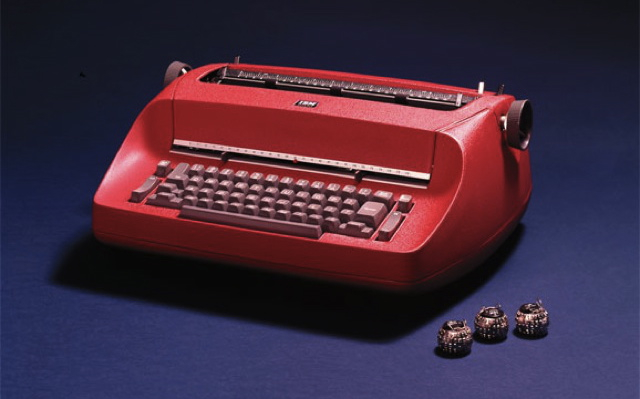
So, closing the circle, I’m here with Papa Google’s nine-year-old adopted child star, YouTube, to give you a sense of the marvels of one of the greatest analog inventions ever, that sexy beast: the typewriter.
Nietzsche’s Writing Ball
Friedrich Nietzsche was what we’d today call an “early adopter” of technology. In 1881, while still in his 30s, Nietzsche was going blind. He found it extremely painful to read or write for even half an hour. As a freelancer, or “independent philosopher,” he wanted a portable device to carry with him to warmer climates, so the bulky early Remington machine was out.
He bought a Malling-Hansen Writing Ball, invented in 1865 by a Dane, Rasmus Malling-Hansen. It was the first commercially produced typewriter — a contraption that could easily hold pride of place at steampunk convention. The Malling-Hansen was also the first writing machine capable of typing faster than a person could compose by hand.
РоманМолчанов, “Nietzsche’s Writing Ball” (2013)
Friedrich Kittler, a media theorist, in his book “Gramophone, Film, Typewriter,” says Nietzsche became the “first mechanized philosopher.” Integrating the typewriter into his writing process altered the relationship between writer and text. A composer friend, who claimed his own “thoughts” in music were affected by the type of pen and paper he used, noted that Nietzsche’s terse prose style became even tighter. Nietzsche himself said: “Our writing equipment takes part in the forming of our thoughts.”
Hemingway said he wrote description in longhand, but dialogue on a typewriter “because people speak like a typewriter writes.” [We wonder what would have come of American minimalism had Hemingway had access to a Mac OS? No Raymond Carver? No hilariously bad Carver imitations?]
Nietzsche soured on the Writing Ball after it was damaged while travelling, but not before he wrote this rather touching ode to Mensch & Übermaschine.
“THE WRITING BALL IS A THING LIKE ME:
MADE OF IRON YET EASILY TWISTED ON JOURNEYS.
PATIENCE AND TACT ARE REQUIRED IN ABUNDANCE
AS WELL AS FINE FINGERS TO USE US.”
The Blick
The Remington desk typewriters may be the best known of early models, but an odd duck called the Blickensderfer pioneered an innovation in 1892 that wasn’t seen again for almost 70 years. Rather than raised letters on the ends of individual bars, it had a turning cylinder with letters embossed on it.
I love this video of the Blick 5 in action: the cylindrical wheel moves like a quizzical little creature and there’s the not-your-typical-typewriter-video soundtrack — Die Antword, white South African rap-ravers.
frankieboyfrankie, “Early Blickensderfer 5 Typewriter” (2011)
Sexy Beast
It wasn’t until 1961 and the launch of the IBM Selectric that anything like the Writing Ball or the rotating cylinder was seen again. Watch how alive the “printing element,” as it’s called, looks in this television ad for the first Selectric — like a small curious alien when in slow motion, much like the Blickensderfer’s cylinder.
ReDefinedHistory, “1960s Commercial for IBM Selectric Typewriters” (2011)
This wasn’t hyperbole [We’re looking at you, Ridley Scott-helmed Mac ad during the 1984 Superbowl!] The IBM Selectric WAS revolutionary.
Yes, there was the golf-ball type element that boogied across the page faster than the eye could see and opened up a world of typefaces to ordinary consumers including sunshine orator, presidential elite and Hebrew. It also did away with the carriage return lever and paved the way for computer printers with its mechanical digital-to-analog converter.
J Forbes, “IBM Selectric Typewriter Mechanism in Action” (2011)
These days it’s the Selectric’s radical, organic shape — its sleek sex appeal — that gives it its iconic status. Designed by Eliot Noyes, it was meant to deliberately emulate shapes in architecture and furniture design at the time — think Eames and Saarinen. Even the Selectric’s “squircle” keys play off the shape of the outer shell. Noyes said he wanted it to look like a piece of sculpture, while IBM’s senior designer Alan McCroskey also thought of the Selectric as “The Beast.”
The Selectric is so iconic that “Mad Men” creators used it during the first season even though it was anachronistic to the time period because they wanted “the look.” “Try not to be overwhelmed by all this technology,” Joan tells Peggy as she first uncovers her putty-coloured Selectric: “It looks complicated, but the men who designed it made it simple enough for a woman to use.”
Well before “Mad Men” there was the cheerfully chauvinistic “How To Succeed in Business Without Really Trying” in 1967.
David Swift, “A Secretary Is Not A Toy” (“HTSIB Without Really Trying,” 1967)
The Sound of Writing
It’s not just the look of typewriters, their solid thingness, their status as objects, that’s so deeply satisfying. I was talking to a friend about this whole typewriter fetish the other week and she said: “I miss the sound of writing.” And really, that’s often what it comes down to for those of us lucky enough to have used typewriters before the advent of the PC. [We use “lucky” as a euphemism for old enough.]
In fact, if you’re pining or simply nostalgic for something you never actually experienced, you can now download an app at Fat Lab for your computer called Noisy Typer. A typewriter sounds like you’re really writing, being assertively productive. Or even as if you’re playing an instrument.
Leroy Anderson, “The Typewriter” (Brandenburg Symphoniker, 2012)
That was the Brandenburg Symphony Orchestra, playing Leroy Anderson’s “The Typewriter” — notice how simple the instrument was to tune.
And well before there was air guitar, there was air typewriter. Here’s Jerry Lewis in 1963’s “Who’s Minding The Store?” also playing Anderson’s “The Typewriter.”
Frank Tashlin, “Jerry Lewis & Typewriters” (1963)
They’re all sexy beasts, aren’t they? Every one of them. Gorgeous enough for sure to steal the show in the 1937 musical “Ready, Willing, and Able.” (4:15 onwards)
Ray Enright, “Too Marvelous For Words” (Ready, Willing, & Able, 1937)
I also get a kick out of this typewriter number from 1970’s “Bombay Talkie” — not the kind of movie that tends to come to mind when you picture a Merchant-Ivory production. The song, “Typewriter Tip, Tip, Tip” (by Shankar Jaikishan) was also used by Wes Anderson on “The Darjeeling Limited” soundtrack.
James Ivory, “Typewriter, Tip, Tip, Tip” (Bombay Talkie, 1970)
Very Symbolic
For a much less sentimental and more sobering metaphor, we’ll have to turn to Vancouver’s own Rodney Graham and his 2003 installation, “Rheinmetall/Victoria-8.” It’s a 10:50 35mm colour film of a 1930s German typewriter projected on continuous loop with a 1961 Victoria 8 projector from Italy. The typewriter is slowly covered over the course of the film by flour until it begins to look like slightly surreal Canadian winterscape at dusk [anywhere but in Vancouver]. The only sound is the loud, mechanical clatter of the Victoria 8.
Rodney Graham, “Rheinmetall/Victoria-8” (MOMA, 2003)
Graham called the Rheinmetall, which he found in pristine condition in a local junk shop, an “incredibly beautifully made, solidly designed typewriter” (designed by a manufacturer that also made arms for the Third Reich, much like Remington is better known for rifles).
The Victoria 8: once the Rolls Royce of projectors, Graham described as: “very beautiful, kind of overly powerful.” Graham said he wanted to have “these two objects confronting each other. Two obsolete technologies facing off: the typewriter and projector.”
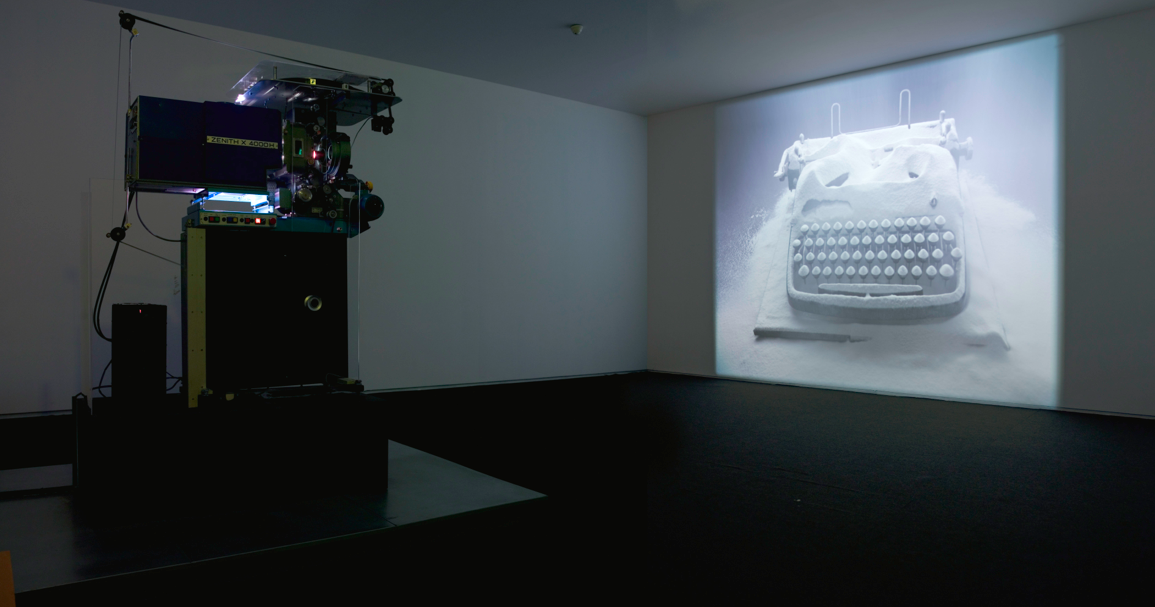
How obsolete, though, is the typewriter today? I believe it could be making a comeback much like the vinyl revival — sales have been going steadily up for six years now — and film cameras like the Lomo, for both aesthetic and practical reasons. Typewriter mechanics say they’re no longer sitting around like the Maytag repairman. Mine even makes house calls.
Listen to one typewriter repairman who looks uncannily like Christopher Walken [we wish Christopher Walken was our typewriter repair man] explain the attraction of these marvellous writing machines. (3:47-3:52)
JansonMedia, “The Typewriter In The 21st Century: Trailer” (2012)
We had an electric typewriter when I was a kid and I played a writing game with friends that riffed off the Surrealist drawing game, Exquisite Corpse. We would write a relay story taking turns typing a line or two and stopping in the middle of a sentence and so on and so on.
I invite you to come up help type a letter on “The Beast” to Prime Minister Stephen Harper to let him know what you think of his economic diplomacy, attitude towards the arts, the environment, whatever. I promise to mail it.
– Zsuzsi Gartner

During the Ryeberg Live intermission, several people came up to the stage and typed on Zsuzsi’s “Sexy Beast.” When the show resumed, Erik Rutherford read the letter aloud.
Here’s a scan of the original. Feel free to add your own sentiments below.
